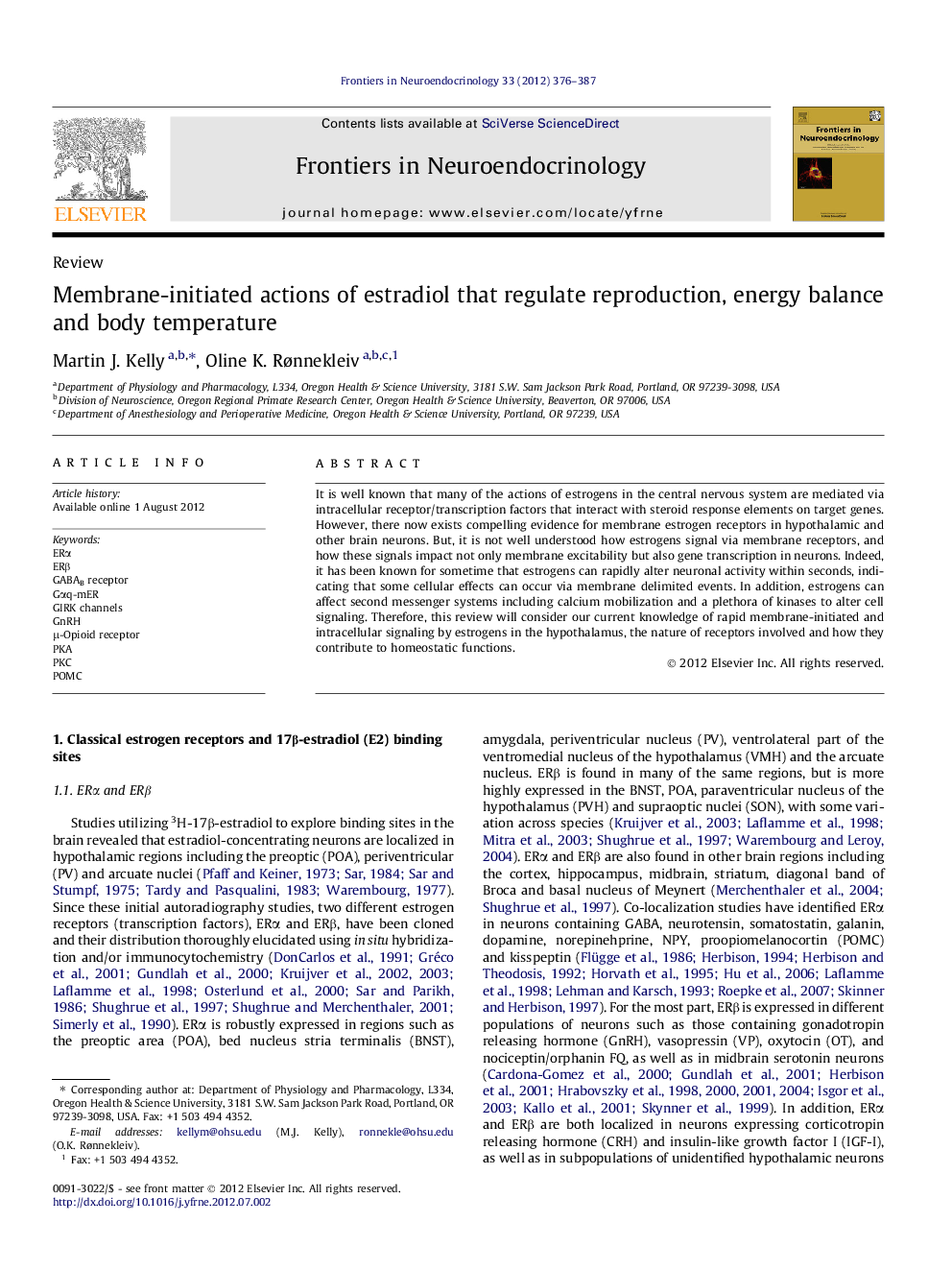| Article ID | Journal | Published Year | Pages | File Type |
|---|---|---|---|---|
| 2799414 | Frontiers in Neuroendocrinology | 2012 | 12 Pages |
It is well known that many of the actions of estrogens in the central nervous system are mediated via intracellular receptor/transcription factors that interact with steroid response elements on target genes. However, there now exists compelling evidence for membrane estrogen receptors in hypothalamic and other brain neurons. But, it is not well understood how estrogens signal via membrane receptors, and how these signals impact not only membrane excitability but also gene transcription in neurons. Indeed, it has been known for sometime that estrogens can rapidly alter neuronal activity within seconds, indicating that some cellular effects can occur via membrane delimited events. In addition, estrogens can affect second messenger systems including calcium mobilization and a plethora of kinases to alter cell signaling. Therefore, this review will consider our current knowledge of rapid membrane-initiated and intracellular signaling by estrogens in the hypothalamus, the nature of receptors involved and how they contribute to homeostatic functions.
► 17β-Estradiol and the mER selective ligand STX activate a Gαq-coupled membrane estrogen receptor in hypothalamic neurons. ► 17β-Estradiol and STX increase calcium oscillations and GnRH release in monkey placode GnRH neurons. ► 17β-Estradiol and STX modulate energy homeostasis. ► 17β-Estradiol and STX lower core body temperature and increase bone density in hypo-estrogenic females.
